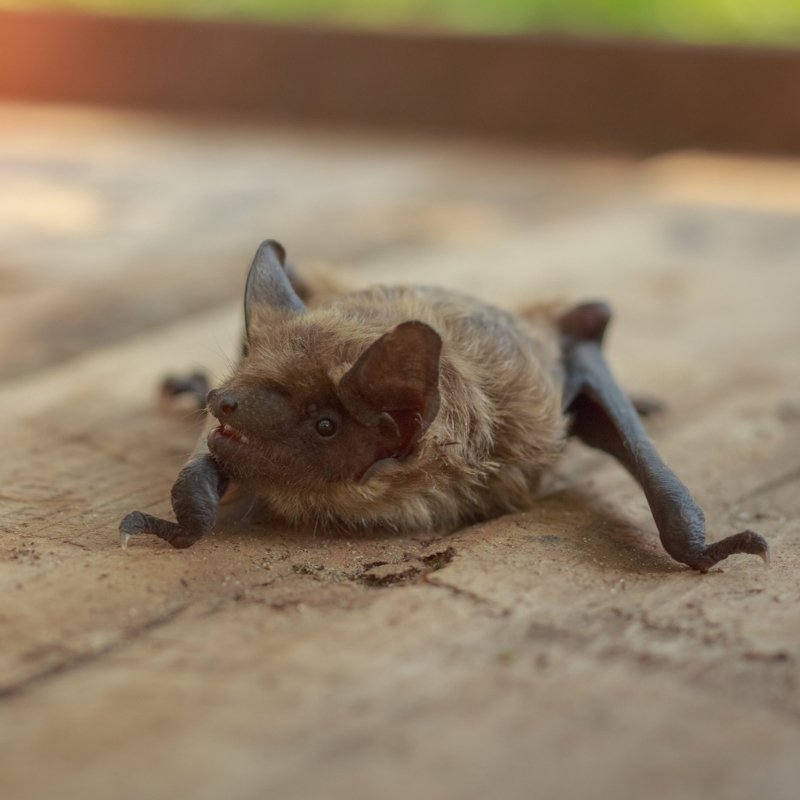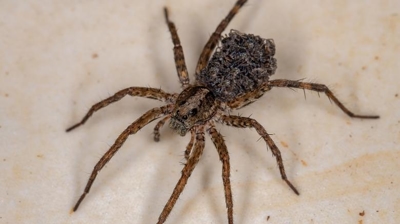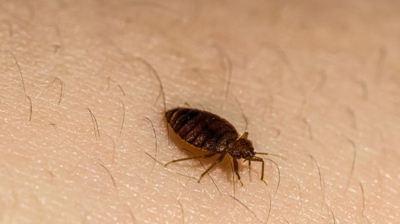
Are Bats Harmful?
Bats (Chiroptera), in general, are not inherently dangerous to humans, and they play crucial ecological roles, such as pollinating plants and controlling insect populations. However, there are some factors to consider when it comes to potential risks associated with bats:
- Disease Transmission: Bats can carry diseases, including the rabies virus, which is transmissible to humans through bites and scratches. While not all bats have rabies, it's essential to exercise caution and seek medical attention if you are bitten or scratched by a bat.
- Histoplasmosis: Bat guano (feces) can harbor the fungus that causes histoplasmosis. People who come into contact with guano in enclosed spaces, such as caves or attics, may be at risk of contracting this respiratory disease.
- Allergens: Bat guano and urine can contain allergens that may affect some individuals. Breathing in airborne particles from guano can lead to respiratory issues in sensitive individuals.
- Accidental Encounters: Bats may enter homes or other structures unintentionally, leading to potential human-bat encounters. These situations can be unsettling, but the bats are usually not aggressive and will leave once they find their way out.
- Fear and Misconceptions: Bats are often feared due to myths and misconceptions. Fear can lead to unnecessary harm to bats and may hinder conservation efforts for these important animals.
Most bats are not aggressive toward humans, and they typically avoid contact when possible. They are valuable contributors to ecosystems and human well-being. However, it's also essential to take precautions when dealing with bats to minimize risks. If you encounter a bat indoors, it's best to contact our professionals for safe removal rather than attempting to handle it yourself. If you are bitten or scratched by a bat, seek immediate medical attention, and follow recommended treatments to mitigate the risk of disease transmission.
Learn more: What Do Bats Look Like?
Bat Removal
Removing bats from your home or business is critically important for several health, safety, and structural reasons. While bats are ecologically valuable, their presence in buildings can pose significant risks:
- Rabies: Bats can carry rabies, a fatal virus if transmitted to humans or pets. Even a small bite or scratch may go unnoticed because bat teeth are tiny, making transmission easy.
- Histoplasmosis: Bat droppings (guano) can harbor Histoplasma capsulatum, a fungus that becomes airborne when disturbed. Inhalation can cause serious respiratory illness, particularly in people with weakened immune systems.
- Parasites: Bats often carry fleas, mites, and ticks, which can spread to humans or pets.
- Property Damage: Bat guano is highly acidic and can damage wood, insulation, and paint. Over time, this can compromise the structural integrity of attics, ceilings, and walls. Urine from bats can stain surfaces and create strong, persistent odors that are difficult to remove.
- Fire Hazards: Guano buildup near electrical wiring increases the risk of short circuits and fires.
- Noise and Nuisance: Bats create scratching, squeaking, or fluttering noises, especially at night, which can be disruptive to residents or employees. Their presence may also deter customers or tenants if they notice bats or guano in visible areas.
- Legal and Ethical Considerations: Many bat species are protected by law, so improper removal can lead to fines or legal issues. Our professional bat control ensures safe, legal exclusion without harming the bats. Proper removal involves sealing entry points after all bats have left, preventing re-infestation.
Ignoring a bat infestation can put people at serious health risk, damage property, and create ongoing nuisances. Our professional bat control provides safe removal, cleanup of hazardous droppings, and long-term prevention strategies that safeguard both humans and the building.
Learn more: How To Get Rid Of Bats
Bat Control
Hiring our professional bat control team is the safest, most effective way to deal with a bat problem. While bats play an important role in the ecosystem by controlling insect populations, they can create serious issues when they roost in homes or businesses. Here are some of the reasons to hire our professionals instead of attempting bat removal on your own:
- Health and Safety Concerns: Bats can carry diseases such as rabies, and their droppings (guano) may harbor Histoplasma fungus, which causes histoplasmosis, a potentially dangerous lung infection. Handling bats or contaminated areas without proper training and protective equipment can put your health at serious risk.
- Legal Protection: Many bat species are protected by state and federal laws, meaning it is illegal to harm or kill them. Our professionals understand these regulations and know how to safely and legally remove bats without violating wildlife protection laws.
- Proper Exclusion Methods: Unlike DIY methods that often fail, our professionals use proven bat exclusion techniques that allow bats to leave but prevent them from re-entering. This ensures long-term results without harming the animals.
- Damage Prevention and Cleanup: Bat infestations can lead to extensive damage in attics, walls, and insulation due to urine and guano buildup. Our professionals not only remove the bats but can also provide cleanup, decontamination, and restoration services to protect your property and air quality.
- Expertise and Efficiency: Bat behavior is complex. Our professionals know how to locate hidden roosts, identify entry points, and time exclusion properly (outside of maternity season to avoid trapping pups inside). This level of expertise ensures the job is done thoroughly and efficiently.
Dealing with bats can be stressful and dangerous. Hiring our experts means the problem is handled quickly, legally, and safely, allowing you to rest easy knowing your home or business is protected.
Bat Exterminators
Hiring our local exterminators to address a bat problem offers distinct advantages over attempting DIY methods or relying on non-local services. These benefits combine safety, effectiveness, and long-term protection for your property:
- Expert Knowledge of Local Bat Species and Behavior: Our local exterminators are familiar with the species native to your region, their roosting habits, migration patterns, and seasonal behaviors. This knowledge allows them to determine the most effective timing and methods for removal, minimizing the risk of trapping bats illegally or ineffectively.
- Safe, Legal, and Humane Removal: Many bat species are protected by law, and mishandling them can result in fines or legal trouble. Our local professionals know state and federal regulations and use exclusion techniques that remove bats safely without harming them. Proper exclusion prevents bats from returning, which is often missed in DIY attempts.
- Health and Sanitation Expertise: Bats can carry rabies and leave droppings (guano) that harbor the fungus causing histoplasmosis. Our local exterminators are trained in safe cleanup procedures, including protective equipment, proper disposal, and disinfecting affected areas. We can assess contamination in insulation, attics, and other areas, preventing ongoing health hazards.
- Damage Prevention and Property Protection: Our professionals identify and repair potential entry points, structural vulnerabilities, and damage caused by bat activity. We prevent costly long-term damage to insulation, wiring, ceilings, and wood, which can result from guano and urine.
- Efficient and Cost-Effective Service: Our local exterminators can respond quickly, reducing the time bats spend in your building and minimizing property damage. Their experience ensures the problem is resolved the first time, avoiding repeated treatments or ineffective DIY attempts.
- Ongoing Support and Prevention: Our local team provides ongoing inspections and preventive measures, such as sealing entry points, installing one-way exit devices, or advising on landscaping adjustments. This reduces the likelihood of future infestations and protects your home or business over the long term.
Hiring our local exterminators ensures that bat removal is safe, legally compliant, thorough, and prevents future problems, while protecting both your health and your property investment.
Bat Solutions
Our exterminators use Integrated Pest Management (IPM) to manage bats because these animals, while beneficial for controlling insects, can cause property damage, leave behind hazardous droppings, and pose health risks if allowed to roost in buildings. IPM begins with a thorough inspection to identify entry points, roosting areas, and patterns of bat activity. Management strategies focus on exclusion techniques, such as installing one-way exit devices and sealing openings after bats have safely left, combined with habitat modification to make structures less inviting. In some cases, temporary deterrents like ultrasonic devices or light modifications may be used to discourage roosting. Regular monitoring ensures that bats do not re-enter the building and that preventive measures remain effective. By emphasizing non-lethal, targeted interventions and long-term prevention, IPM provides a safe, environmentally responsible, and sustainable approach to bat management.
Where Are Bats Found?
Bats are highly adaptable creatures, and they can be found in a variety of habitats around the world. The specific locations where you might find bats can vary depending on factors such as their species, feeding preferences, and roosting habits. Here are some common places where you might find bats:
- Caves and Caverns: Many bat species prefer to roost in caves and caverns, especially during the daytime. These locations provide stable temperatures and protection from predators.
- Trees: Tree-dwelling bats, also known as tree bats, roost in tree hollows, under loose bark, or in foliage. Some bats are known to hang from tree branches.
Buildings and Structures: Bats often roost in man-made structures, such as attics, barns, abandoned buildings, and bridges. They can enter through small openings and find suitable roosting spots. - Bat Houses: Some people install bat houses to provide roosting sites for bats. These structures mimic the natural roosting conditions that bats prefer.
- Caves and Mines: In addition to natural caves, abandoned mines can provide suitable roosting sites for bats.
- Bridges and Tunnels: Bats are known to roost in the crevices of bridges and tunnels.
- Forests: Bats may roost in forested areas, using the shelter of trees and the forest canopy for protection during the day.
- Urban Areas: Bats can be found in urban environments, where they may roost in buildings, trees, and bat houses. They are often attracted to areas with abundant insects.
- Water Bodies: Bats can be seen foraging over bodies of water, such as lakes, rivers, and ponds, where insects are abundant. They drink water in flight by skimming the surface.
- Desert and Arid Regions: Some bat species are adapted to desert environments and roost in caves or rock crevices.
- Agricultural Areas: Bats play a crucial role in pest control in agricultural settings, so you may find them in and around farms and fields where insects are plentiful.
- Tropical Rainforests: Diverse bat species inhabit tropical rainforests, where they have various feeding and roosting strategies.
- Mountains: Bats can be found at various altitudes, including high mountain regions, depending on their ecological niche.
Bats are primarily nocturnal, so they are most active at night when they come out to forage for insects or other food sources. If you're interested in observing bats in their natural habitat, you may consider participating in organized bat-watching events or consulting local experts who can provide guidance on where and when to see bats.
Bat Life Cycle
The life cycle of bats is fascinating and varies depending on the species, but it generally includes several stages: reproduction, growth and development, and, in some cases, hibernation. Here is a comprehensive overview of the life cycle of bats:
- Mating: Bats typically mate in late summer or early fall. Male bats compete for the attention of female bats, often through elaborate courtship displays.
- Fertilization: After mating, female bats store the sperm and delay fertilization until the following spring, during which time they enter a period of torpor or dormancy.
- Maternity Roosts: Female bats seek out maternity roosts, which are safe and sheltered locations where they can give birth and raise their pups. These roosts can include caves, attics, tree hollows, and man-made structures.
- Gestation: The gestation period for bats varies by species but generally lasts several weeks to a few months. Some bat species have a delayed implantation, where the fertilized egg does not immediately implant in the uterus.
- Birth: Female bats give birth to live young, known as pups, in the spring or early summer.
- Nursing: Pups are born blind, hairless, and completely dependent on their mother's milk for nourishment. Female bats have specialized mammary glands that produce milk. They nurse their young in the roost.
- Growth: Pups grow quickly, and their eyes typically open within a few weeks. They develop the ability to fly at various ages, depending on the species, but it can range from a few weeks to several months.
- Weaning: Eventually, the pups are weaned and become more independent, learning to forage for food and navigate their environment.
- Migratory Behavior (not applicable to all species): Some bat species, such as the hoary bat, undertake seasonal migrations to find more favorable foraging areas. These migrations can be hundreds of miles long and often occur in the spring and fall.
- Hibernation (not applicable to all species): In regions with cold winters, some bat species hibernate to conserve energy and survive the winter. During hibernation, their body temperature and metabolic rate drop significantly, allowing them to go without food for several months. They typically hibernate in caves, mines, or other sheltered locations.
- Longevity and Reproduction: Bats can live for many years, with lifespans ranging from several years to several decades, depending on the species. They often reproduce annually, with some species giving birth to a single pup per year and others having multiple litters.
There is a wide diversity of bat species, and their life cycles can vary greatly in terms of timing and reproductive strategies. Additionally, the life cycle of bats plays a crucial role in maintaining healthy ecosystems by contributing to pollination and insect control.

Hear From Our Happy Customers
-
"Exceeds Expectations"
I can’t say enough positive things about this company... The tech that came out, Jarvis went above and beyond my expectations. Thank you guys, I will continue using your services.
- Jake M. -
"Professional & Considerate"
I’m pleased with Miche services. Jarvis came today. Professional and considerate. Thank you!
- Judy B. -
"Wonderful Service"
Wonderful service. Jarvis is great. Took care of everything I needed. Thank you!
- Henry P. -
"Great Communication"
Tech was on time, communication was great, and he accommodated my needs.
- Alonzo W. -
"Fantastic & Patient"
Jarvis was fantastic and patient. He answered my questions with an in-depth explanation and addressed all of my areas of concern. Would love for him to be my assigned tech going forward. Well done!
- Yonnette M. -
"Very Knowledgeable"
The tech that arrived was courteous, professional, and very knowledgeable. He was Great.
- Uerial I.




